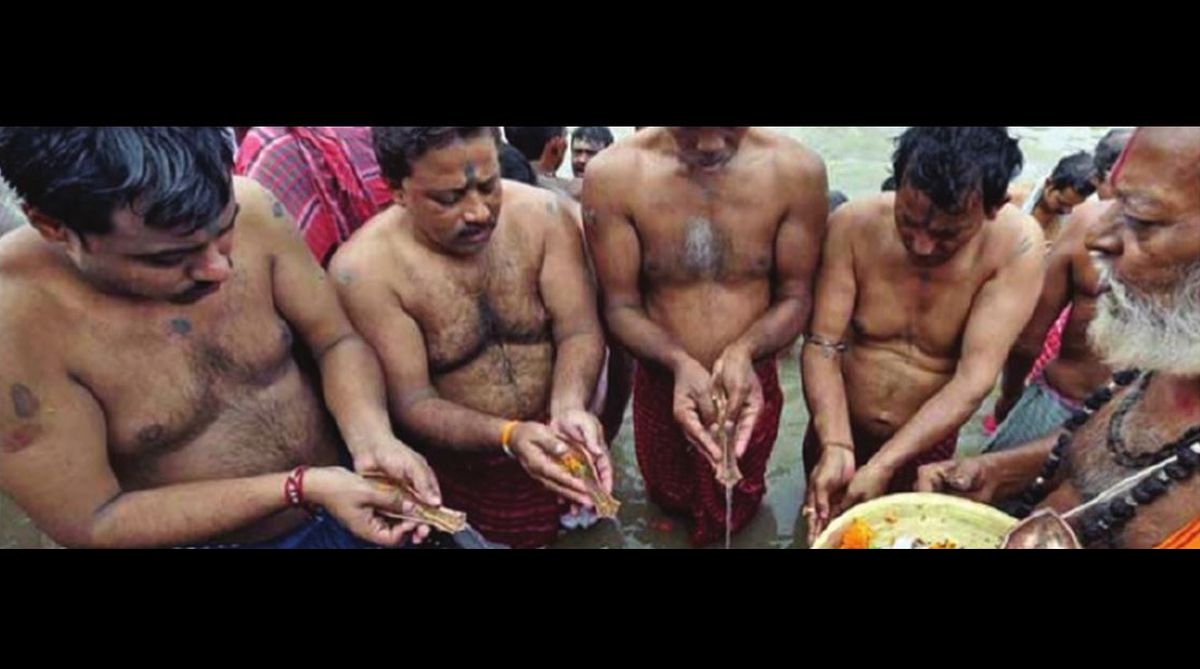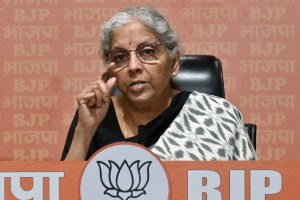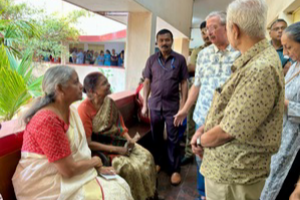One of the many questions asked by Yaksha to Yudhisthira, the eldest of the Pandavas, during a mythical conversation, was, ‘What is the greatest wonder’? Yudhishthira replied:, “Day after day, countless creatures are dying, yet those remaining behind believe themselves to be immortal. What could be more wonderful than this?”
This attitude of most of the mortals is, indeed, surprising as they assume the immortality of the corporeal form. But Hinduism and many other religionists believe ‘death’ to be just a brief pause in the continuous play of Cosmic Drama.
Death is a truth only for the body, but definitely not for the soul. Hindus have long believed the ‘soul’ to be immortal which through millions of lives partakes in the Divine Drama.
Incarnating as a living being for learning its predetermined lessons, the soul changes its physical form at regular intervals to continue its upward spiritual progress. The physical body has been compared with garments, discarded after the same become worn out, only to get embodied anew through a new birth. Death is a reality only for the physical form, not for the soul.
So when death is ‘certain’ and promises a newer life, why do we fear it so acutely? Being a preordained route to newer life and body, the death of an individual after a fulfilling life should actually be an occasion for celebration. Why do we feel sad when a loved one dies after a meaningful and satisfying life? Shouldn’t we rather be happy and celebrate the occasion as the departed soul moves to the next round of spiritual progression.
According to most of the Hindu scriptures, our grief for the departed soul hinders its transmigration. The soul often finds it difficult to move on due to prolonged expression of pain and sorrow. Transmigration of a soul becomes easier if it sees its near and dear ones happy and cheerful. Many cultures across the world including India celebrate ‘death’ after a full life.
Since all our pain is because of the corporeal form, death immediately relieves the soul of all the suffering and anguish related to the body. As such, the soul feels extremely blissful and light when out of the body, unless it sees a reason for its attachment to this mortal world. And one such reason is said to be its body which should be immediately disposed after confirmed death.
Many souls, due to their attachment to the material world, keep hovering around their mortal remains in the hope of re-entry into the same. That is why, many Hindu scriptures prescribe immediate disposal of the body. Cremation is said to be the best form of disposal as it eliminates a soul’s last hope for return to its previous frame which ceases to be worthy of carrying a life.
But shouldn’t the untimely death of our loved ones sadden us more? Death is nothing but a pause in the incessant play of cosmic drama. So, the untimely death of an individual is either because of its own Karma, or because of the brief role played as preordained in the overall scheme of things for settling its ‘Give and Take’ account.
It could also be because of the Karma of the near and dear ones who need to derive the right lessons from the premature death of an individual. The cosmic design may want the remaining relatives to go through bigger ordeals through such mishaps for preparing them for a bigger role in life or for learning a more profound lesson.
After all, higher positions, larger responsibilities and greater success require us to go through greater ordeals and sacrifices. All beautiful creations have to go through one or the other form of agony before shaping up as something gratifying and delightful.
Sometimes, it could merely be a divine desire for an elevated or different role for the soul departing early. Sooner or later, the soul moves to a newer body for a new innings. But our excessive grief holds it up and keeps it tied to the earth. Hence, we should not continue mourning for the departed soul way beyond the last rites.
In the Bhagvad Gita, Lord Krishna warns us against any attachment to the fruits of our actions as the same not only gives rise to despondency and disappointment, but also precludes our spiritual advancement.
Krishna advises us to practise Nishkama Karma (selfless action) by deeming all our deeds as offerings to the God without any expectations for favourable outcomes. This world supposedly being a ‘School’ for learning our metaphysical lessons, life’s unexpected shocks and challenges are nothing but God’s way of testing our mettle.
How we react to such occurrences and pick up the thread to move ahead in life is what signifies the level of our spiritual growth. Whether the same is in its infancy, childhood, youth, adolescence or has reached the stage of maturity is determined by our conduct through good or bad times. We ought to learn the right lessons from such apparently wrong turn of events in our lives rather than cursing the Destiny for our miserable condition.
Putatively, the soul moves through three phases after death and before the next birth. First, the soul goes into deep rest after the tiring role-play as a living being. Thereafter, it spends considerable time reviewing all its actions of the preceding life.
Then, it spends time preparing for the next rebirth depending on its preconceived requirements. It has been suggested that it is the soul which decides the destination of its next rebirth. The same depends on the level of its spiritual growth, though the subtle divine forces may, directly or indirectly, influence the process.
Hindu rituals like Pinddaan or the practice of setting aside food for the ancestors while eating are said to be performed with an aim to help our ancestors take a physical form as it is food which turns into body. This way, the descendants help their ancestors take a physical form early.
In Hinduism, Pitra Paksha or ‘Ancestor Fortnight’ is observed annually by performing Sradh for the departed souls with a view to express our gratitude to the departed souls who brought grace, wisdom, protection and love to our lives. Doing this, we seek their blessings and pray for their salvation.
The Pitra Paksha is prescribed in Hindu scriptures such as the Yajur Veda, the Puranas, the Ramayana, the Mahabharata and the Bhagvad Gita. It is also referred to as Sradh and Tarpan.
According to the Vedic scriptures, an individual is born with three debts. The debt to God is called Dev-Rin. The debt to the sages and saints is termed Rishi-Rin. The third debt to one’s parents and ancestors is called Pitra-Rin.
These three debts are not like liabilities, but are the three mortgages on one’s life. By making such an arrangement, the Hindu sages have actually attempted to create an awareness of one’s duties towards our immediate and extended family i.e. the larger society.
Our ancestors, as our guardian angels, are said to help us in all our endeavours. So, next time you feel that some impossible task has been accomplished or something miraculous happened, your ancestors may have a role therein.
However, these ancestors expect us to perform acts of kindness in their names during their ‘assumed’ annual visits to our homes in their subtle bodies during the Pitra Paksha. The most important part of the Sradh ceremony is to feed the Brahmin on each day of the dark half of the Hindu month of Aashwin.
In the olden days, the Brahmins, being mostly preoccupied with acquisition and dissemination of knowledge, did not have the means to make ends meet. Hence, the need to provide for them through such rituals. However, the same no longer holds true.
Today, we can feed anyone needy and poor. Christians call it ‘Charity’, Muslims know it as Sadaquah and Buddhists observe the ritual of Bhiksha. Doing good in the name of one’s ancestors is just another way of thanking and honouring them after they are gone.
(To be concluded)
The writer is an IAS officer, presently posted as the Commissioner of School Education, West Bengal. The views are personal and not the Government’s.










